
Miguel Palma, Installation view, 2011
If awards were doled out for exhibition size, the Gulbenkian in Lisbon Portugal, would land one for their latest Miguel Palma show. On view through July 3rd, “Assembly Line” isn’t billed as a mid-career retrospective, even though what’s on display is already far more than the average artist produces in a life time. If Palma wasn’t already known for his prolific studio practice his now. The show also achieves much the same result as a mid-career retrospective, the arranged objects illuminating the artist’s process and enduring concerns; his tendency to work on many piece at once (it would appear one idea has never sparked less than ten others); his interest in the artificial and the real as represented by nature and technology; and yes, an unwavering interest in play.
As Palma is a good friend of the blog, I’m likely biased, but “Assembly Line” is also the best solo museum show I’ve seen Lisbon. As such, I thought I’d chat with Palma about his exhibition. We talked about art, life, and cigar torpedos.
Paddy Johnson: Your show the Gulbenkian is huge. How did it come about?
Miguel Palma: Initially, the museum wanted to show “Rescue Games”, which was shown at The Prospect One Biennial in New Orleans in 2008. “Rescue Games” is a huge boat, and based on the Higgins boats they used during the Second World War, in Normandy and the Pacific. Andrew Higgins [the manufacturer who built the landing craft] was from New Orleans.
PJ: But as far as purpose, this was an inverted boat in the sense that it was exhibited on land, and therefore stable and unmoving but a giant pan filled with water at the top of the boat slowly rocked back and forth.
MP: Yes, and the sheer size of the boat created some problems at The Gulbenkian — the dimensions of the piece, the weight of the piece was too big to show at the museum. It's around 60 feet by 33 feet, and with the water 20 tons. So the museum was not equipped to show it.
After that, Isabel Carlos, the director, decided to show the model and the collection of the drawings that I made during the process.
PJ: How did you go from showing the drawings and the maquette to a show that resembles a retrospective?

Miguel Palma, Rescue Games, 2008, Prospect One Biennale, New Orleans
MP: After we had those problems with showing “Rescue Games”, Isabel Carlos decided to show some works related to the idea of water. For example, with Platform, there is a huge building that is suspended with its feet in water, and the levels of that water are always changing, so the building becomes instable. It is always swaying back and forth. It's about the way the way that even when employing nature, technology provides imperfect solutions.
That was the second piece to show, and afterwards other pieces came to the exhibition, like Deep Breath or Pleura. Those pieces connect with the way that we breathe, with air, with life, with our fragility.
So the show Isabel curated evolved from those works and themes. The way that Isabel decided to show the exhibition — with a big studio in the center — is like the way I work, the way I develop ideas. I'm always doing different things at the same time. In the exhibition, you can see maybe 50 pieces inside a very small space, each more or less connected with ideas of models and maquettes and impossible things to show and to build.
The difference with this exhibition — compared with most museum shows — is that there's not such an emphasis on showing the pieces as individual works. You can see too much. You can see more than is supposed to be shown. It's more like my studio — it's more a way of showing how I work.
PJ: There are 170 works in this exhibition, which is huge, and Carlos describes you as one of the most prolific artists in Portugal. I understand this isn't even close to all of your work?
MP: If we had been able to show “Rescue Games” at the Gulbenkian, the exhibition would have been completely different. This exhibition isn't really a plan B, but it's a different way of showing my way of working. The 170 works that are on view are a part of my work, but they're hardly a retrospective.
PJ: That's interesting. You don't consider the show to be a retrospective?
MP: I don't think so. There are old pieces from 1989, and pieces from 2011, but it's a selection, and there are other concerns”¦ with Rescue Games we would have been able to see a big piece, almost an impossible piece to build, something almost between possible and impossible”¦with this exhibition we see the opposite of that. We see a lot of small devices as opposed to a single huge piece.
PJ: A lot of the work uses mechanisms”¦ do you consider yourself a kinetic artist? I understand that as a contemporary artist you're likely not interested in labels, but the description seems relevant.
MP: I do videos also, but I'm not worried about having to do something that moves. Sometimes, though, I really need that approach to reality. I work with two engineers — one mechanical engineer and electronic engineer — and I'm always trying to explain how I'd like to see things work and build solutions to how to make things work. And those engineers help me solve problems. For the most part, my pieces aren't really kinetic”¦ they aren't even well-engineered. I feel sometimes that I'm not making art, that's the truth. I think I'm making things that need to explain something, that need to tell a story. Those pieces stay in the middle of the process; they don't ever become really perfect in terms of function. They are no longer pieces of very clear ideas. Exploring that area is uncomfortable, but it gives me a lot of joy.
PJ: Old cars, planes, and bombs are a dominant subject in this show. What is it about the history of these objects that interests you?
MP: Of course I see things and I read stuff, but I am more interested in metaphors than history for history's sake. To give you an example, the car with the bamboo suspension sitting beside us [not in the show] is a way of talking about the dream of having a comfortable car, but it's also — as a process — about dealing with fragility. It's about the tension created in the dip of the bamboo, the softness that makes the work possible.
I have a kind of a frustration with mechanics. I know the principal things of a jet engine, but I don't know how to build it. If I want to build anything, I need the help of technical people, people who know about these things. Even for a small gear box, to reduce the speed of something and give it more torque or whatever, I need help all the time. There's a kind of magic when you have an idea but you don't know how to make it work or control it”¦ you feel like you are able to be surprised by technology, and I like that.
I am surprised by technology because I don't know enough, I am surprised by nature because I don't know enough, I'm surprised by everything because I don't know so much. I would love to learn and I want to be part of that world, but I'm not really a specialist. I'm not a professional.
PJ: Well, you're a professional artist.
MP: Yeah, I'm a professional artist, but a professional artist is someone who is thinking about things that are a little out of control.
PJ: This reminds me of what you said earlier about Carlos's center for the show. It was where all these little maquettes that you had made were on displayed, all very detailed and controlled, but of unattainable or unexecutable dreams.
MP: Well, that's it really. There is a lot of communication between certain pieces, and that point, I think, was really well understood by Isabel. That intensity, that density of the pieces, in the middle of the exhibition… it's the way I deal with ideas. The work has puzzles, both in terms of objects and ideas. I think I live with a family of images and objects, a sort of lexicon, a bank of ideas. I feel more comfortable with that collection of things that I feel a connection with.
There are a lot of pieces in this show that evoke breathing or fragility. You had a book with lungs that moves back and forth, with this elastic that lasts about two months before it breaks. There's also the cigar torpedo — if ever there were something that would blow up a pair of lungs — that would do it. [Miguel laughs- “sure.”] And there's also the large plastic sculpture Pleura — with the hospital that rises and falls as it fills and releases air.

Miguel Palma, Pleura (left), Deep Breath (right)"
PJ: What was interesting to me about “Pleura” was the small tear that occurred during the course of the exhibition. Of course you'll want to fix it, but there's a fragility to all of these pieces. They naturally get torn — they are not invincible, in the same way that the human body is not invincible. Could you talk a little about that? Life, death, fragility, and the human body are often expressed in your work and are often related to machinery in some way.
MP: When I was twenty-four, I had this really intense experience: my father died, my grandfather, my grandmother — in three years, I had three people die. We were really close and we lived in the same place. My father was forty-nine, almost my age now. We didn't have a great connection, but that period of the year that he was sick, I became so close to him, and he became much more close to me. I'm telling you this because those days were the beginning of my work. I started to build machines. I started to build a car. I buried a piece called Cemiterra — I built a really big globe, and a box, quite a big box, in metal- in the Gulbenkian in '91.
I worked with the Gulbenkian to do this — it was an enormous five-ton, ten-foot-tall piece and really close to the garden pathways above. They gave me permission and the piece stayed for ten years below the surface. And then ten years later, we just took away the piece, and now it's in the University of Lisbon.
The machines I build represent my interest in searching for a solution to maintain a life. I really feel that there is a connection with that moment of my life when I saw my father, who was so strong, start to feel so sick that I was almost carrying him in my arms. It is very strange. Of course, everyone has to deal with that. The hospital was a place to go and to live with the sick. At the same time I was also in a huge accident. I was caught by a car, and cracked my head open. I think those two events are connected with the piece “Deep Breath” and also with the transparent stuff that is always going up and down, and also with breathing — which is quite elastic in its own way. With those works, you can see inside the interior, but you are not able to touch it. It's like an x-ray: you see something, but really you can't go there. There is this knowledge that we have through machines, but we need more than that.
PJ: You shot a video of boats in a plastic pool you made outside your apartment in the show. Could you talk about that piece a little?
MP: That pool was located in concrete platform built fifteen years ago to hold a crane. If we go to the street, you just see a crane built on top of the structure. Fifteen years ago, everyone just threw garbage at this concrete thing, so one day I decided to clean it up. I built this blue cover, as if to symbolize the sea, and filled the hole with water. I had built some toy boats from kits made in fifties and sixties, and built a remote control system… it took a little less than a day, and I filled the tank with water during the night. After that, I decided to play with those boats. This avenue is one of the main entrances in Lisbon, and you have a huge number of people who come from outside… it was kind of a confrontation with normal life, with commuters bringing the kids to school, going to work, going to meetings, and me playing with boats, a little bit outside of everything.

Miguel Palma, "Upa! Upa!", 2006, original model of a napalm bomb (an offer of Fundicao de Oeiras)
PJ: The bomb in your show was a strange mix of fake and real too. Could you talk about that?
The bomb on exhibition was constructed in 1961 for use during the colonial war. It is the first prototype of a napalm bomb ever to be built in Portugal and was thus left untouched behind bars – and forgotten about until the present day.
Next to it, I presented a 1/10 scale model of the bomb, which the factory workers offered to the then general and director of this plant producing war materials in Portugal. The title UPA stands for “United People of Angola”, and was written on the belly of the bomber planes dropping bombs of this kind on Angola. Thus, the people – in the belief that friendly aircraft was approaching – would become the perfect target.
I found this war-time equipment at the very point where it was about to be destroyed and “forgotten” outside my studio. The bomb, along with its scale model and the letters written during the period leading up to the actual production process are now exposed in memory of a period in time, which by all means was to be erased from memory, as a less glorious part of our history.
PJ: Your show closes in roughly a month. What are you going to do next?
I'm always promising myself that I am going to slow down a little bit, but that's optimistic. I have other things to do. I am going to do a tour — a trip first made by a doctor in 1932 trying to reach Copenhagen for a conference about therapy for kids. He drove from Lisbon and Copenhagen in a Morris 10, which was a small car from 1932, and he kept a diary. He took pictures, and he wrote a diary about his car and the trip. He even produced a critique of the car he sent to Morris, and the company changed the suspension because of his feedback! He returned a year after the next model came out, and I have that car. I'm doing the tour eighty years later, trying to find the same restaurants, hotels, and buildings — some don't exist anymore — from Spain before the Civil War, from Germany before the Second World War. I will miss a lot of those things, but I will do the same trip, and I will return to Lisbon.

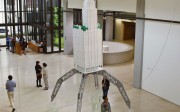

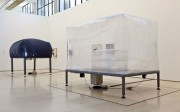
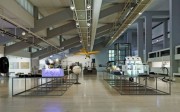
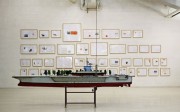
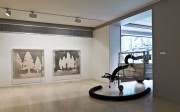


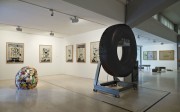
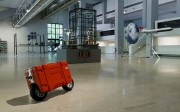


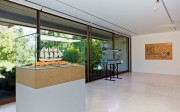
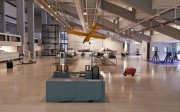
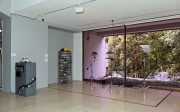


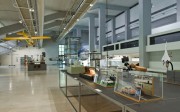

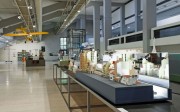
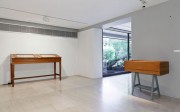
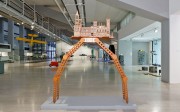



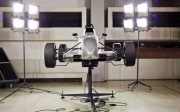

Comments on this entry are closed.